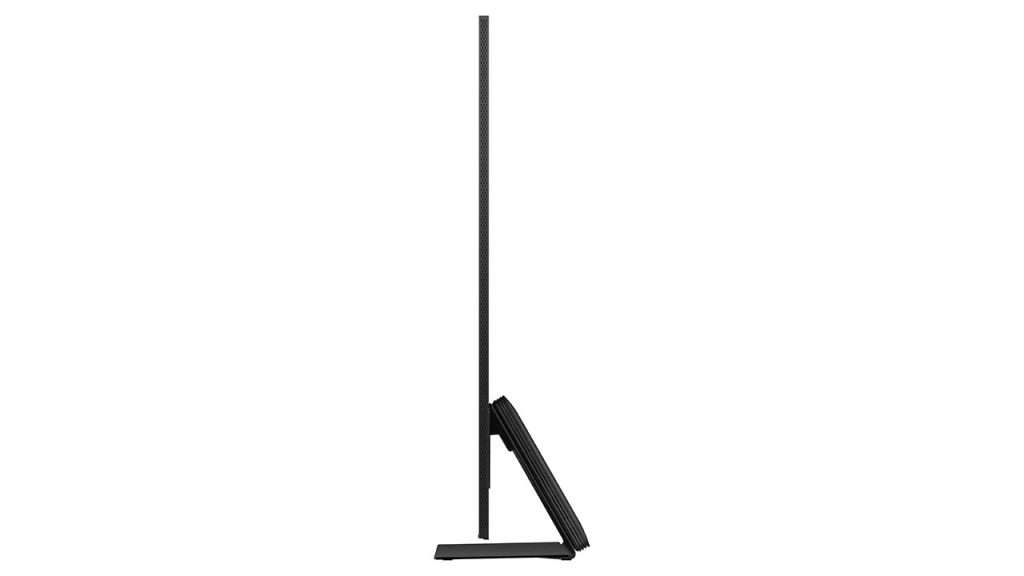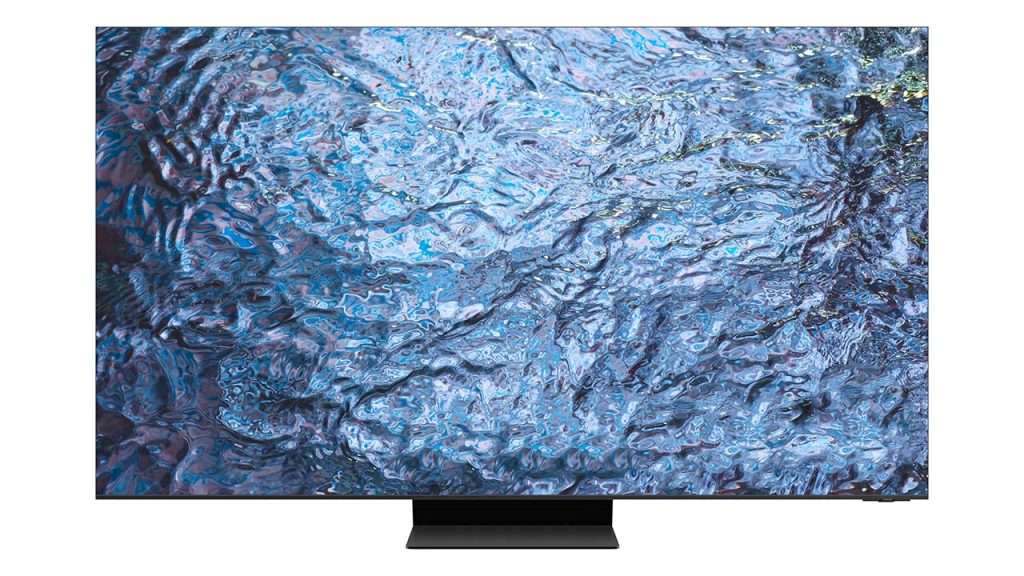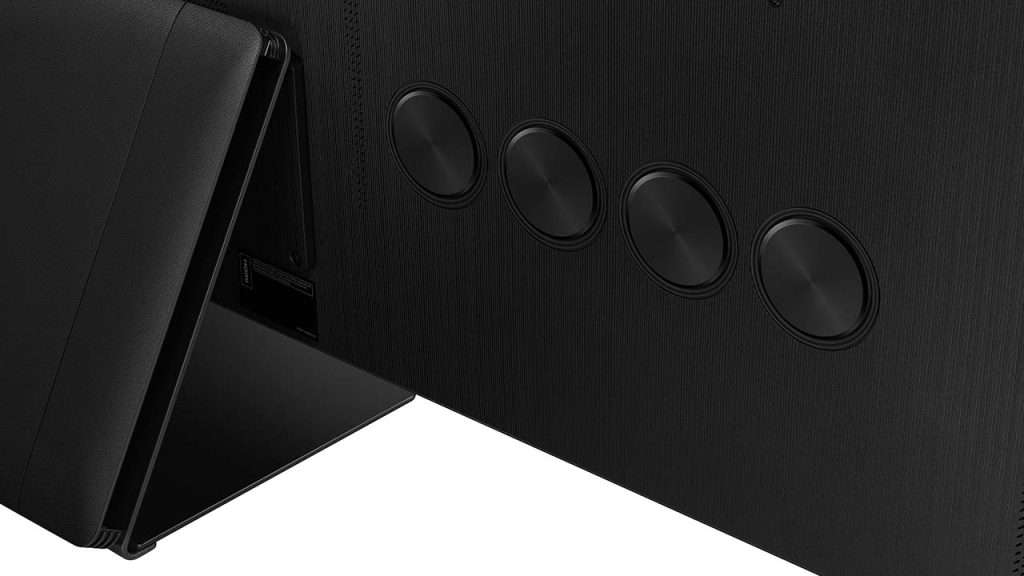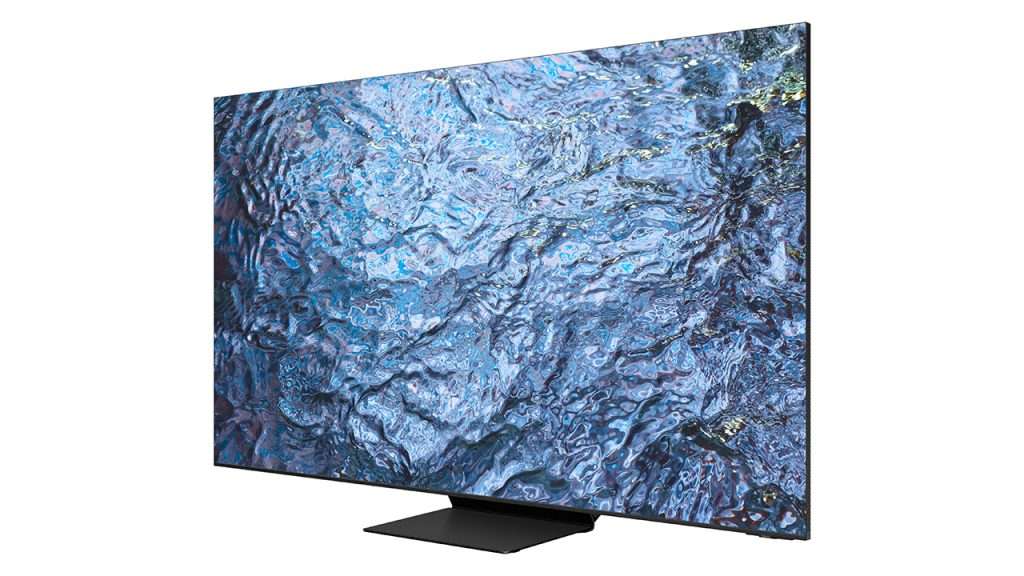Since 2021, Samsung has been trying to deliver an LCD screen that can match the best features of an OLED display, colour accuracy and deep blacks. All while avoiding the weaknesses of an OLED TV, mainly lack of brightness and burn-in. With the QN900C, Samsung has shown that it can do that, and it does it well.
While its predecessors, the QN900A and the QN900B, were brilliant stepping stones in showing what Samsung’s mini-LED QLED technology can do. The QN900C is even better.
Featuring a sleek, seamless design, ease-of-use features like the One Connect Box, a 12-speaker setup and, most importantly, a fantastic display, the QN900C is a beast.
With the new and improved Neo Quantum HDR 8K+ processor, the QN900C does an excellent job of upscaling content to match its 8K screen. If you’re worried about a lack of 8K content, don’t be. 4K and even HD movies and TV shows look great here. It also boasts a massive 2,000nits brightness, meaning it can get much brighter than most OLEDs whilst maintaining vivid colours and deep, inky blacks.
To put it simply, the QN900C gets everything right. While costly, it’s one of the best TVs on the market. Whether you’re gaming or watching films, the QN900C has proven Samsung can make an LCD TV that can compete with the best of the best OLEDs. It’s very good.
Pros
- Sleek, seamless design
- Vibrant mini-LED display
- One Connect Box
- Great for gaming
- Capable upscaling
Cons
- SmartThings app is hit and miss
- Expensive
Price
The QN900C is very expensive, coming in three sizes 65-inch which costs $10,999, 75-inch, which costs $14,999 and 85-inch, which costs $17,999.
There aren’t many 8K TVs to compare the QN900C with – especially as Samsung dominates that market here in New Zealand – but as a comparison, the 65-inch Sony Bravia XR A95K costs $4,999 and the 77-inch LG C2 costs $7,699. Both of these TVs are 4K OLED screens, though.
For our review device, we were given the 65-inch version of the QN900C.
Design
This is a very nice-looking TV boasting a sleek, seamless design that stands out.
The “Infinity Display” means there’s next to no bezel around the edge of the screen. It looks incredible. The picture almost seems like it’s floating. The speaker grilles are located around the edges. These cannot be seen when looking at the TV front on and are minimal and unobtrusive when sitting at an angle.
Setting up the TV is a breeze. It sits on a centred, flat stand, and there are slots on the back for wall-mounting. The One Connect box has returned as well.
This acts as a receiver with 3x HDMI 2.1 ports, 1x HDMI eARC port, 3x USB-A ports, an optical port, an ethernet port and an RF input for satellite television. It connects to the TV via a single cable – it comes with a short and long cables to work with almost any setup – and I love this feature. With only one cable connecting directly to the TV, everything else connects to the One Connect Box. For someone who’s looking to wall mount the QN900C, it’s a game changer. The box can be tucked away under the TV, or you can put it in a cabinet for easy access, and plugging new devices in couldn’t be easier.
The One Connect Box also allows the QN900C to remain thin. Because the box and isn’t ports aren’t located on the back of the TV, there isn’t added width, meaning you can get even less of a gap between the TV and the wall.

Display
The QN900C display is brilliant. This is a Mini-LED display – as opposed to an OLED one – which utilises a large number of mini-LEDS as its lighting source instead of one large backlight, as is the case in more traditional LCD screens.
To explain this briefly, an OLED display stands for Organic Light Emitting Diode. In an OLED TV, pixels can produce light when an electric current is applied. This means that every pixel on the display can turn on or off independently. This can create deep blacks and incredibly vibrant colours while allowing for a wider viewing angle so you can see the picture clearly no matter where you sit in the room.
An LCD TV uses a backlight which shines through the panel. The panel is made up of crystals which can open or close to control the amount of light that passes through. Most of the time, LCD TVs achieve less impressive blacks and lower contrast than OLED TVs because of the backlight. They’re also unable to capture colours as accurately as an but are generally brighter.
This is where Samsung’s Mini-LED QLED technology comes in. Instead of using a large singular backlight, the QN900C uses many, much smaller LEDs as the backlight source. This enables more precise local dimming zones – 1,920 in the QN900C – which can all be turned on or off independently. This allows the backlighting to improve contrast and black levels, more akin to an OLED screen as opposed to a standard LCD TV.
Samsungs’ previous iterations of this technology, the QN900A and QN900B were able to achieve impressive brightness levels while being able to maintain deep blacks and vibrant colours, however, the QN900C trumps them both. It’s incredibly bright boasting over 2,000nits of brightness, and delivers excellent contrast and accurate, rich colours. It looks amazing.
Being an LCD TV helps get around the weaknesses of OLED screens, mainly burn-in and lack of brightness. Watching a darker film like The Dark Knight, the contrast between dark and light pixels looked great. The blacks were deep, and I never had any issues with blooming effects (when backlighting from pixels that are supposed to be bright bleeds through to pixels that are supposed to be dark). Similarly, more vibrant films like Spiderman Into the Spiderverse and Luca looked bright and colourful without the backlighting overdoing it.
There’s also a number of “Expert” ways to change the image to your liking as well. You can go into the settings and change contrast levels, black levels and so much more.

Upscaling
Because there is a lack of 8K content available for viewing, the QN900C relies heavily on its ability to upscale a 4K image onto the 8K display. Upscaling 4K content for an 8K display means the pixel density per inch needs to double; essentially the pixels need to be stretched to twice their size. This is where the QN900C’s processor, the Neo Quantum HDR 8K+ will use algorithms and techniques to analyse the content, make a guess about what the missing pixels should look like and input them into the image.
The results are excellent. Upscaled 4K content looks even better than it did on the QN900B, the images are clear, and there’s less noise. Also, 1080p HD content looks good as well.
Audio
The QN900C has 12 speakers built-in that can deliver Dolby Atmos sound. This paired with Samsung’s Object Tracking Sound technology – in which the TV analyses and tracks the images on screen to figure out where audio should be coming from and matches it – allows the TV to produce high-quality audio and a surround sound-esque experience. However, the QN900C is best when paired with a Samsung soundbar.
For our review, Samsung provided us with a Q990C soundbar. The highlight here is Samsung’s Q-Symphony function, in which the TVs work in tandem with the soundbar. The TV acts as a more dominant centre channel, and I found it much easier to hear everything in the film or show I was watching. I could hear what the characters were saying without having to sacrifice the score or sound effects which played through the soundbar. It’s brilliant.

Functionality
The SolarCell One Remote has returned with the QN900C. This doesn’t require batteries. Instead, it has a solar panel on the back that absorbs both natural and artificial light to charge. You can also charge it via a USB-C port if you need to.
It’s a minimalist remote with dedicated buttons for Netflix, Samsung TV Plus, Disney+ and Prime Video, with rockers for the volume controls and a circular navigation tool. It’s fine.
The Tizen smart TV platform is the operating system here, and it works as it should. It’s easy to navigate, you can easily download your favourite apps, access settings to tweak the display, and Alexa and Bixby support are here as well. I especially liked being able to access Xbox Cloud Gaming directly from the TV. Unfortunately, the app only streams games at 1080p, so they looked pretty bad on the massive 8K screen. However, that’s not necessarily Samsung’s fault.
Unfortunately, I had trouble using Samsung’s SmartThings app, in which you can control the TV, soundbar and any other Samsung device from a single app on your Samsung phone. I tested this with a Galaxy Z Fold 4 and often had trouble connecting to the TV and soundbar. The app didn’t always recognise they were turned on, and it became a bit tedious. It’s no way near as seamless as Apple’s ecosystem integration.
Gaming
The QN900C is great for gaming. With four HDMI 2.1 ports, you can get the most out of next-gen consoles with the ability to display up to 8K/60fps or, more realistically, 4K/120fps.
The TV supports FreeSync Premium, which helps to prevent lag and stuttering, variable refresh rates, which allows gameplay to look smooth and low-latency mode, so there’s less time between your inputs and the action on screen.
To enhance the gaming experience even more, there’s a quick access menu in which you can change several settings. You can specialise the picture for a specific type of game, like RPG, FPS, or Sports. You can turn Game Motion Plus on and off, which aims to reduce motion blur and smooth out gameplay. You can change the screen ratio, and there’s even an option to zoom in on a minimap. While none of this is necessary to enjoy the gaming experience, it’s a nice add-on and can help the game look and run exactly how you would like.
Don’t expect miracles here, though. A poorly optimised game, is still going to run badly no matter what TV you play it on.

Verdict
The Samsung QN900C Neo QLED 8K TV offers a premium viewing experience, and it doesn’t disappoint. While the high price tag may deter some, if you can afford it, this is one of the very best TVs available right now. It gets everything right.
Samsung has done a very good job of minimising the issues with LCD TVs, and the mini-LED QLED technology has never been better. The QN900C can get incredibly bright at over 2,000 units while still providing the visual fidelity of deep blacks, vibrant colours and excellent contrast with little to no blooming. And the Neo Quantum HDR 8K+ processor is very good at upscaling lower-resolution content to fit the screen without inaccuracies.
The Infinity Display, with its minimal bezels make it seem like the screen is floating. It’s immersive and looks excellent. The TV is easy to set up, whether wall mounting it or using its centred stand, and the One Connect Box allows for easily hidden cords and cables.
It has excellent gaming features with its HDMI 2.1 ports and quick-access gaming settings. And the 12 in-built speakers do a good job of registering where audio is coming from and playing it to suit. You will get more out of the audio when paired with a Samsung soundbar though.
With the QN900C, Samsung has shown that it can deliver an LCD display that can produce black levels and vibrant colours comparable to an OLED screen. All while avoiding the weaknesses of OLED displays, low brightness and screen burn-in. Quite simply, this is one of the best TVs you can get, and you’re going to love it. Just prepare to pay a lot for it.

